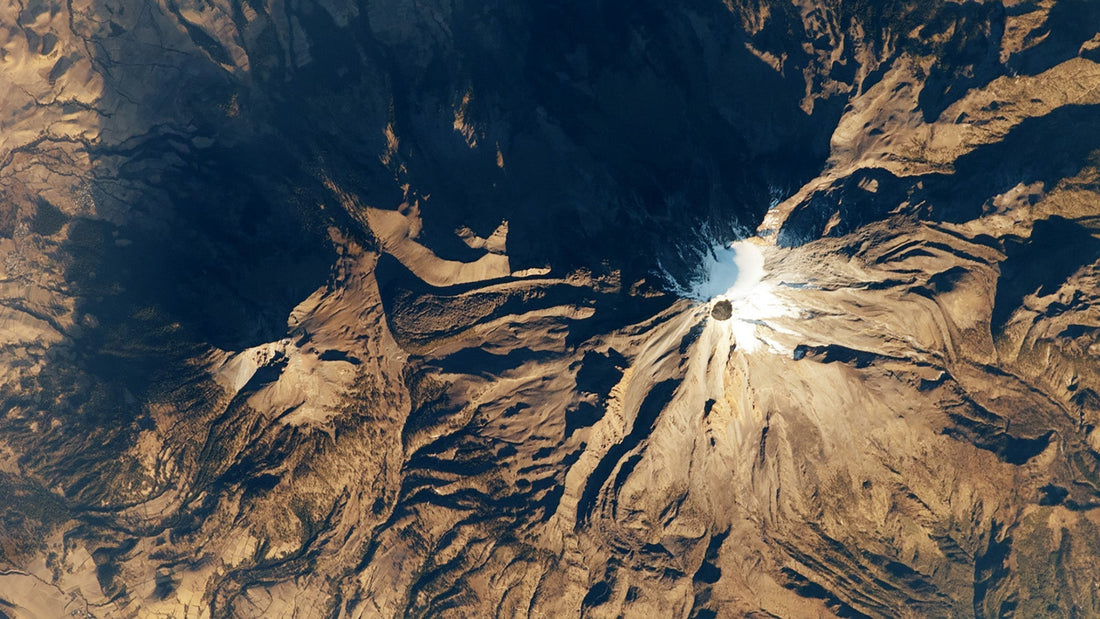
Where to climb in November
Share
November continues the shift in focus for mountaineering towards the southern hemisphere. This month is still post-monsoon season in Asia though, so there are plenty of summits to climb in the Himalaya at this time of year.
Here are our suggestions for where the best mountaineering can be found this month, but as always, you’ll need to check up to date information regarding access and logistics, particularly for those areas subject to geo-political tensions (and volcanic activity!). Here’s a little inspiration for the month of November. And if not this year, why not next?
North America
By November, the best mountaineering in North America is actually found in Mexico (yes, technically Mexico is in North America!) where it is the start of the dry season. Often overlooked, Mexico has a range of impressive volcanic summits including Pico de Orizaba which is the highest volcano in North America at 5636m (as seen in the NASA image above).
You’ve probably heard of the second highest volcano (Popocatepetl) which is currently quite active and therefore not recommended – better to admire the view of it from Iztaccíhuat (5286m) instead. The name Iztaccíhuat translates as ‘white woman’ because the profile of the snow covered mountain apparently looks like a woman lying down. We’re not convinced, but maybe it’s a matter of perspective!
South America
November is officially springtime in the Southern hemisphere, and that brings some new mountaineering destinations into season while some areas are winding down (such as the Cordillera Occidental chain that spans Peru, Bolivia, and Chile).
The volcanoes of Ecuador (e.g. Cayambe, Chimborazo and Cotopaxi) offer moderately technical routes over 5000m that are climbable during many months of the year, including November. Interestingly, if you stand on the 6310m summit of Chimborazo you’ll actually be at the furthest point from the centre of the earth, due to the fact it is not a perfect sphere and bulges out at the equator. Take that, Everest!
The Puna de Atacama area in Argentina actually has the highest concentration of peaks over 6000m in the whole of the Andes, but its remoteness has left it relatively under explored. The peaks are largely volcanic, so aren’t technically very difficult – there are even Inca ruins on the summits of some including Nevado de Chañi (5930m). There’s probably even some first ascents still to be made in the region.
Further south the Andean Lake District and Maule regions span the Argentina/Chile border, with an abundance of forests and (you guessed it) lakes surrounding a mixture of volcanic and snow-capped peaks, which are generally easy and done-in-a-day ascents of between 3000 and 4500m.
Antarctica
If you’re after something more adventurous and remote, then South Georgia and Antarctica have got to be on your list (but start saving now, because getting there is not cheap!). South Georgia is steeped in polar history and teeming with wildlife if that’s your thing. Exploring this remote mountainous island on foot or by ski is bound to be a memorable experience.

South Georgia (with Cape Disappointment in the top right of the image, named by Captain Cook when he realised it wasn’t Antarctica!) Photo credit: NASA.
The Antarctic peninsula is much milder than the rest of the continent, so is also a viable location for mountaineering and skiing in November. In both cases, it helps if you’re comfortable on a boat as these are used to access different locations on the coast and surrounding islands, and are much more cost effective (and environmentally friendly) than flying into the region.
Asia
As it’s post-monsoon season in central Asia (home to the world’s highest mountain ranges), November sees a lot of mountaineering action, particularly in Nepal but also in India and Tibet. It can be quieter towards the end of the month, as the temperature drops, so if you’re prepared for the cold you might enjoy more solitude than earlier in the season.
In the Everest region, Island Peak, Mera Peak and Lobuche are good introductions to climbs of around 6000m altitude with lower technical difficulty and are often a stepping-stone for trekkers who aspire to become mountaineers. For those already comfortable on exposed and technical terrain, Ama Dablam (at 6812m) is an undeniably stunning peak, hard to miss on the approach up the Khumbu valley. It has a bit of everything from snow, ice, mixed and pure rock climbing, as well as some extremely exposed high camps. In the same region, you also have Baruntse and Himlung Himal which both make for an excellent progression to peaks over 7000m. Most of these mountains can be climbed in the Spring too, but the post-monsoon season often has more stable (if colder) weather – and there are more logistics companies available than in Spring when the focus is on Everest and Lhotse.
There are of course other mountainous regions in Nepal, including the Annapurna range in the west of the country which is famous for its spectacular trekking. Annapurna I (8091m) is a serious undertaking and usually climbed in the spring, but some of the lower summits and surrounding peaks (e.g. Annapurna IV or Tharpu Chuli) can be climbed in the autumn which coincides with the height of the trekking season as the weather is most favourable.
So there you have it, there’s plenty of mountain adventures to be had around the world in November.
